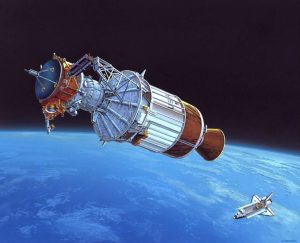- This topic is empty.
-
AuthorPosts
-
23/07/2025 at 11:17 #5352
When it comes to transportation, the cost is a critical factor that influences both individual choices and broader economic trends. With a plethora of options available, from air travel to maritime shipping, understanding which mode of transportation is the most expensive requires a nuanced analysis of various factors, including distance, speed, cargo capacity, and operational costs. This post aims to dissect these elements to provide a comprehensive overview of transportation costs across different modes.
Understanding Transportation Costs
Transportation costs can be categorized into several components: direct costs (fuel, maintenance, labor), indirect costs (insurance, taxes, depreciation), and external costs (environmental impact, congestion). Each mode of transportation has its unique cost structure, influenced by the nature of the service it provides.
Air Transportation: The Pinnacle of Expense
Air travel is often regarded as the most expensive mode of transportation, particularly for passenger travel. The costs associated with air travel can be attributed to several factors:
1. Fuel Prices: Jet fuel prices are notoriously volatile, significantly impacting ticket prices. Airlines often pass these costs onto consumers, making air travel a premium option.
2. Operational Costs: The maintenance of aircraft, airport fees, and the need for highly trained personnel contribute to the high operational costs of airlines. These expenses are reflected in ticket prices, especially for short-haul flights where the cost per mile is disproportionately high.
3. Speed and Convenience: While air travel is the fastest mode of transportation, this speed comes at a premium. Business travelers, who often prioritize time over cost, are willing to pay higher fares, further driving up average ticket prices.
Maritime Transportation: A Costly Affair for Cargo
While maritime shipping is generally considered a cost-effective option for transporting goods over long distances, certain conditions can make it quite expensive:
1. Container Shipping Rates: The cost of shipping containers can fluctuate based on demand, fuel prices, and geopolitical factors. During peak seasons, such as holiday shipping periods, rates can skyrocket, making maritime transport costly.
2. Port Fees and Delays: Ports often impose various fees for docking and loading, which can add to the overall cost of maritime transport. Additionally, delays due to weather or congestion can lead to increased operational costs.
3. Specialized Cargo: Transporting specialized or hazardous materials can incur significant additional costs due to the need for specialized containers and handling procedures.
Road Transportation: The Hidden Costs
Road transportation, particularly for freight, can also be expensive, though it often appears more economical at first glance:
1. Fuel and Maintenance: The rising cost of diesel fuel and the maintenance of vehicles can significantly impact the overall cost of road transport. Long-haul trucking, in particular, can incur high fuel costs, especially over extended distances.
2. Tolls and Regulations: Many regions impose tolls on major highways, which can add to transportation costs. Additionally, regulatory compliance, such as weight limits and safety inspections, can further increase expenses.
3. Labor Costs: The trucking industry faces a shortage of drivers, leading to increased wages and, consequently, higher transportation costs.
Rail Transportation: A Balance of Cost and Efficiency
Rail transportation often strikes a balance between cost and efficiency, particularly for bulk goods. However, it is not without its expenses:
1. Infrastructure Investment: Rail systems require significant investment in infrastructure, which can lead to higher costs for freight services. Maintenance of tracks and rolling stock is essential but can be costly.
2. Operational Efficiency: While rail can transport large volumes at a lower cost per ton-mile compared to road transport, inefficiencies in scheduling and loading can lead to increased costs.
3. Geographical Limitations: Rail transport is limited to areas with established rail networks, which can restrict its use and lead to higher costs for goods that must be transferred to other modes of transport.
Conclusion: The Most Expensive Mode of Transportation
In conclusion, while air transportation generally holds the title for the most expensive mode of transportation for passengers, the costs associated with maritime, road, and rail transport can vary significantly based on specific circumstances. Factors such as distance, cargo type, and market conditions play a crucial role in determining the overall cost. Understanding these dynamics is essential for individuals and businesses alike when making informed transportation choices.
-
AuthorPosts
- You must be logged in to reply to this topic.


